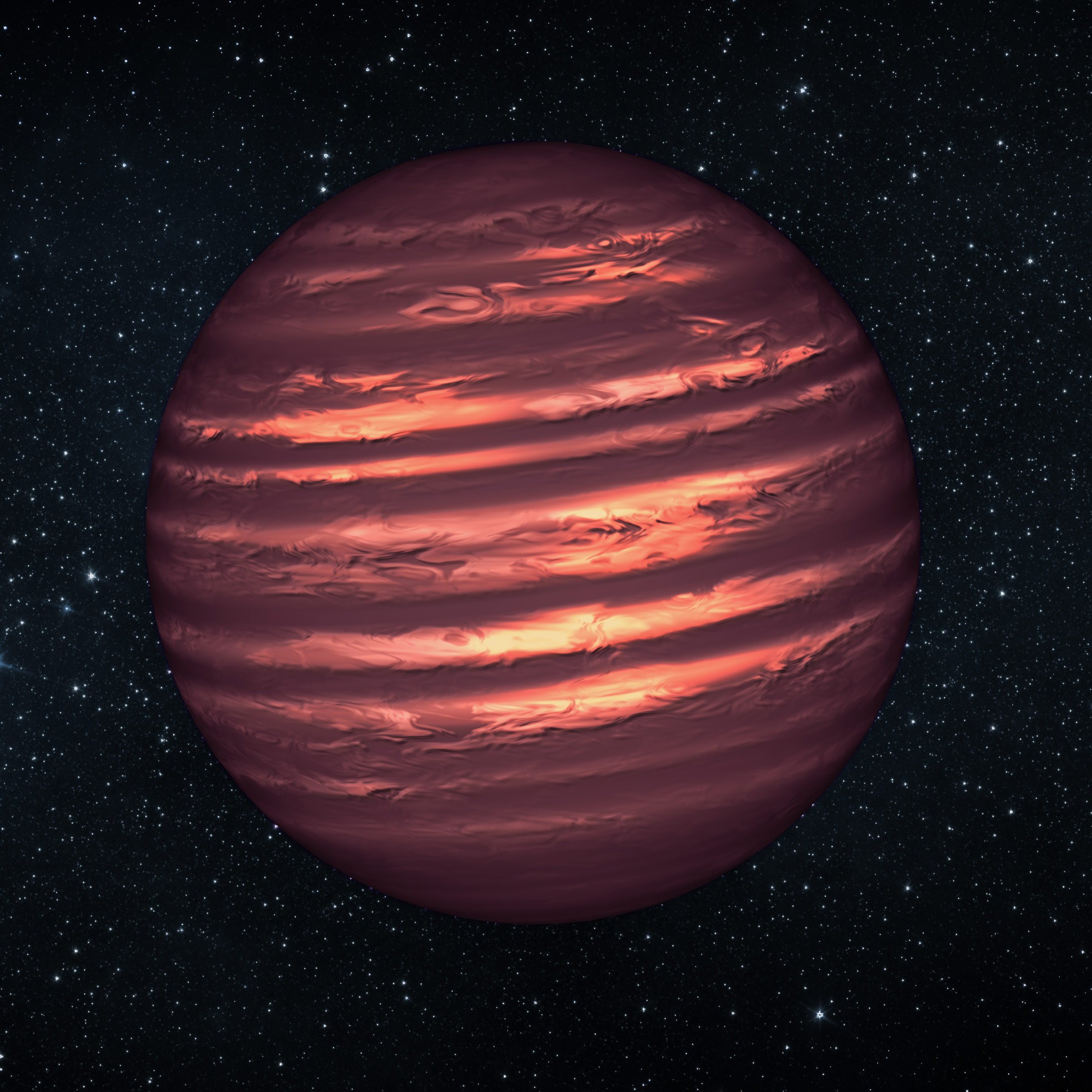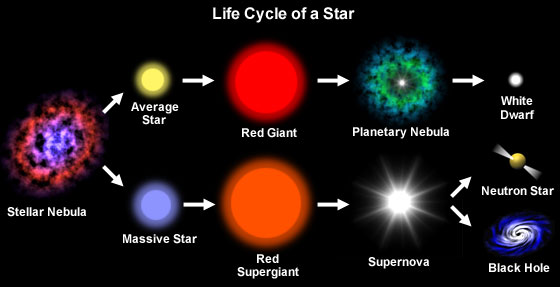At first glance, many of the stars in the night sky look to be the exact same: small, white specks of light. Though they all may appear to be uniform, there are actually many different types of stars, all in different stages of their lifespan, that make up our night sky and our Universe.
The first possibility for differentiation occurs during star formation. Stars are formed in "star nurseries", massive nebulae like the Crab Nebula and Orion Nebula, that consist of large quantities of helium and hydrogen. When some external force acts on the gas cloud, such as a collision with another cloud, it starts a reaction that causes the cloud to divide up into smaller "clumps" that start to heat up and accumulate more mass. These clumps are the beginnings of stars. If these proto-stars do not collect enough mass to undergo fusion reactions in their core, they become brown dwarfs. Brown dwarfs are objects ranging in size from Jupiter to around 10% of the Sun's mass that slowly cool over billions of years.
 |
| Brown Dwarf |
|
|
|
However, if the proto-stars do accumulate enough mass, pressure will build and fusion will occur in the core of the star. Once this occurs, the star is a called a main sequence star. It will spend the majority of its lifespan in this phase. A prime example of a main sequence star is our Sun. Another type of main sequence star is the red dwarf. Red dwarfs are small, cool main sequence stars that are not visible in the night sky by the naked eye. They are the most common type of star in our galactic neighborhood and likely throughout the rest of the Universe.
 |
| Sol |
What happens when a star "dies"?
A star's lifespan depends upon its mass. Less massive stars will be able to maintain their more sustainable levels of fusion and or energy radiation much longer than more massive stars. As stars deplete the hydrogen and helium at their cores, the core will contract as the outer layers expand and cool. This forms a red giant or a red supergiant, depending on the original mass of the star. The star will eventually collapse and explode and its ultimate fate depends once again upon its original mass.
 |
| Stellar Life Cycle: schoolobservatory.org |
|



Excellent post on the life of stars. One thing though: The Crab nebula is NOT a stellar nursery; instead, this nebulae is the remnant of a past supernova. There is a pulsar at its center that powers much of the nebula's emission.
ReplyDelete